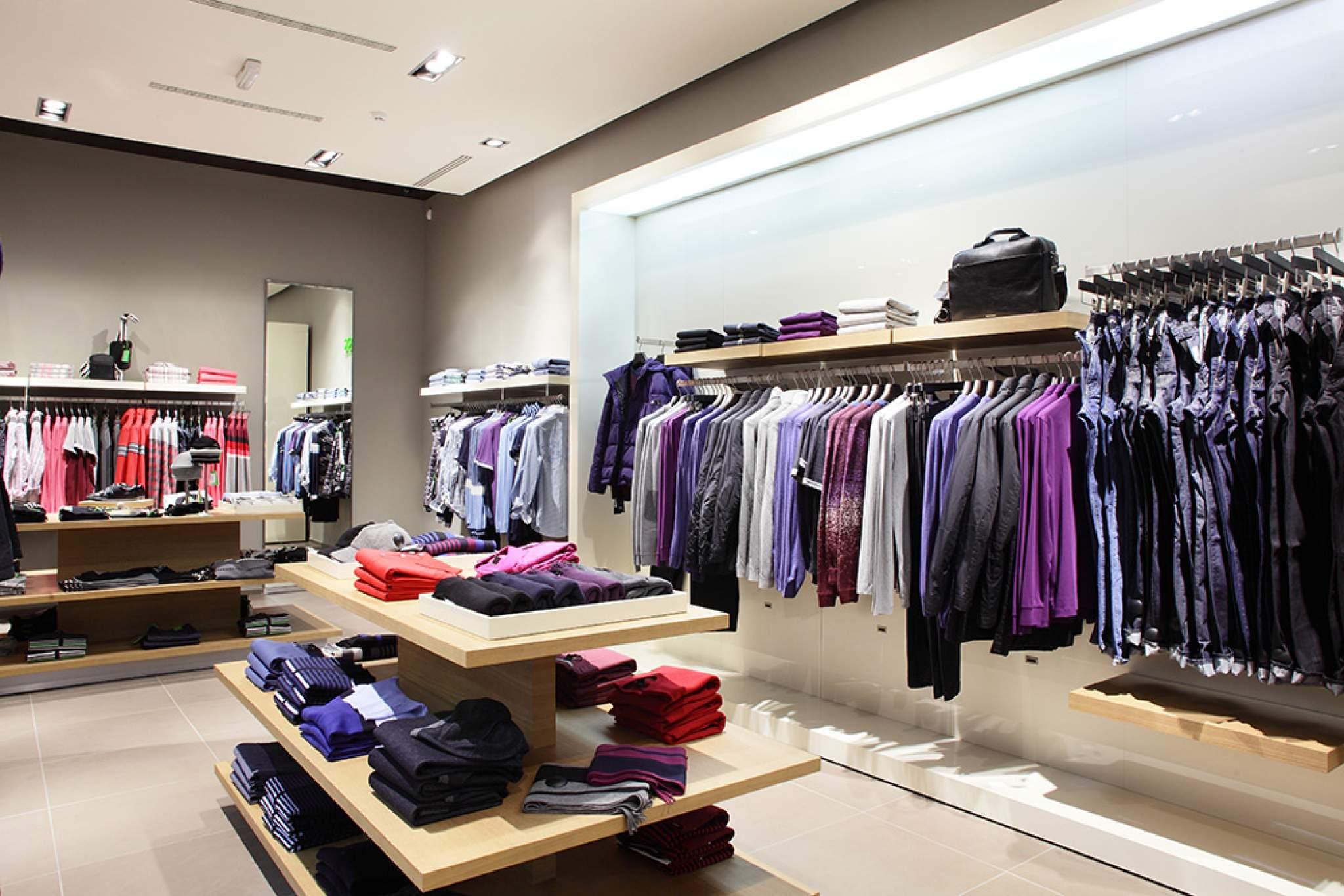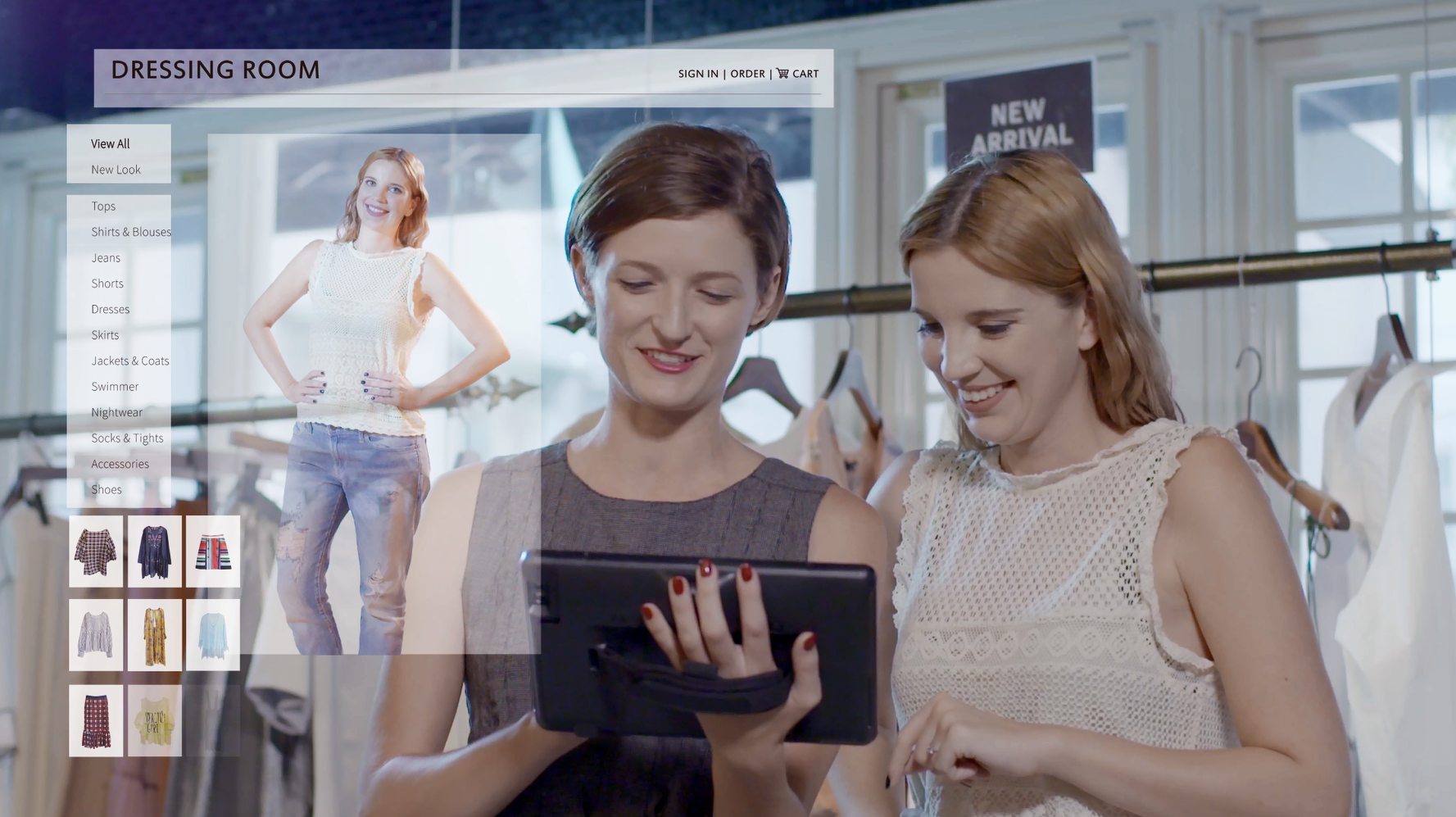Clothing stores in section: why are we so painful to go there

Whether you like or not like the stupid word "shopping", but sooner or later you have to go to the store for clothes. And it is painful! Really painful! Not only are the prices horse, the styles were invented by designers with hands from the wrong place, but also around the line: first in the fitting room, then at the cashier. And the main question: why? Is it really so hard to work normally? We explain why this is the case and how to deal with it.
Harsh reality
First, let's talk about the ideal: in our world, with a rainbow and unicorns, the clothing store occupies a large area, there are many cash desks and staff who help customers make a choice and place a purchase.
')
Reality draws a different picture: there can be a lot of stationary cash desks, but only two or three POS terminals work. As a result, the retailer loses the revenue and loyalty of customers who, looking at the winding queues, go to competitors.
There are several reasons for this problem:
- staff is not always enough motivation to quickly serve customers;
- cash desks more than employees of the trading hall;
- The process of selling clothes takes longer than making a purchase at the grocery store. Therefore, the client waits longer, even if he has few goods.

What do they work in fashion retail
Now let's figure it out, and what we see in the clothing store in terms of the technical component. Filling the cash hub depends on the store. In a small, non-network location, you will most likely see a regular computer and cash register equipment (CCP) . This choice may be due to a small cross, when the cashier draws up no more than 20 purchases per day. But in this case, installing a regular computer is not always cost-effective. It withstands about three years of work, and even a simple POS terminal lasts five to seven years. It depends on the specific retailer: someone is ready to buy a new cheap PC in three years, someone prefers to spend money immediately and take the cashier.
Instead of a cash register, another trouble can happen to a regular computer: when installing it, shop owners usually do not think about the stability of the structure. As a result, it may fall if the cashier or customer touches it.
More developed from a technical point of view, clothing stores put sensory cash registers , because in this segment there are stringent requirements for the appearance of the device. Retailers are trying to arrange the store in one concept, and POS-equipment should fit into it. In addition, the sensory cashier is more compact than the modular one, and you can place some goods at the cashier's place, motivating the customer for a spontaneous supplement.
In foreign stores, the cashier of the fashion store is equipped with a LCD display in order to show advertising content and to visually show the customer information on its purchase. But in our country, this trend is only beginning to develop.
Usually retailers choose a touch box with a display of 15 or 17 ". Some later buy more devices in 10 - 13 ". They try to put a small cashier between the big ones in order to create another place to serve customers, thereby reducing the queues.
From the point of view of the cash register software, clothing stores should create personalized offers for customers. It is necessary that the client at the checkout immediately receive an answer, what discount to expect, could familiarize himself with the content of his bonus account and promotions. Therefore, the cash software must necessarily be equipped with the appropriate module. For example, in our "Profi-T" there are several of them at once .
In addition, specialized software helps the retailer to purchase goods in the store, deliver them, control the balance, especially in the context of "collection", "size". The cashier should be able to examine the remains not only in his shop, but also in nearby, and ideally throughout the network. And if necessary, reserve the goods in the next outlet.
Equally important for the fashion retail is sales analysis, tracking their history. Therefore, the software requires an advanced reporting system.
The first means of struggle: Islands of payment
Everything that we have listed above is a classic of the genre. Which does not help the clothing store to deal with queues at the checkout. In the meantime, there are several, not the most expensive, solutions that can cope with this problem.
Almost every clothing store is equipped with mobile devices, for example, data collection terminals (TSD) , with which you can scan products and receive information from the database. With the help of it, the sales consultant will be able to process the purchase of the client by scanning the bar codes of the selected items and invite him to the point of payment.

From a technical point of view, everything looks as follows: a cash register system is installed on the payment islands, connected to the local store network. Having formed a check on a mobile device, the consultant sends it to print on any convenient CCP. It is to this island that he brings a client who can pay for the purchase there.
Understandably, even if you bring an upgrade in a store, you will not be able to get rid of stationary cash registers - you will have to leave at least one in case of emergency situations, for example, a technical failure, as a result of which the local store network will stop working.
As a result: the retailer spends less on equipping stationary cash places. And you can organize the right motivation of employees: consultants, if the number of sales affects the pay for their work, it will be beneficial to serve as many customers as possible. So they will strive both to provide advice, which will lead to the purchase, and to make payment and checkout. By the way, the personal responsibility of the employees of the sales area is also increasing, which is also beneficial for the retailer.
Second means of struggle: Mobile ticket office
Mobile cashier is generally a great thing, which can act both as a tablet in the hands of a consultant, and as a stationary cashier if inserted into a special slot of a cash register computer. In general, the mobile cash register is a special tablet to which a scanner and a reader of bank cards and NFC chips are connected. With it, you can serve the customer anywhere in the sales area - it is enough for him to pay for selected goods in a cashless way. And the check will be printed on a mobile CCP, which the cashier-consultant also carries with him.

Such a decision is relevant with a large influx of visitors and a shortage of cashiers: in this case, consultants can take on part of their work. This does not require any lengthy training, and the step itself is safe for the retailer, since the employee will not have access to working with the money supply.
Another important point is that a consultant with a mobile cashier in his hands will quickly answer your questions: he will tell you if the desired size or color is in stock. And if not, it will even tell you in which store to find it: well, this is if you just fell in love with some thing and cannot imagine your life without it.
Third Means of Struggle: "Queue Killer"
The “Queue Killer” method has proven itself in fast food. But why not use it in a clothing store? Imagine you are standing in a queue, a consultant with a TSD with an appropriate mobile application approaches you, scans goods barcodes and places an order. Information about it in the online mode goes to the cashier.
For example, the RMS software from Pilot allows employees of the store to scan customers at the scanning station and form a check with a bar code. In this case, it automatically transfers information to the cash software (in our case, “Profi-T”), therefore, having read the data from it, the seller at the checkout immediately gets access to the commodity part of the purchase and can calculate. Thus, the application offloads the most time-consuming part of customer service - scanning goods.
So, here are simple solutions that can help fashion stores finally save customers from queues at the box office. Understandably, this is not a panacea: you can come up with other effective solutions. The main thing is to take care of customers, and not to think that, to spit, and so will buy.
Source: https://habr.com/ru/post/348492/
All Articles